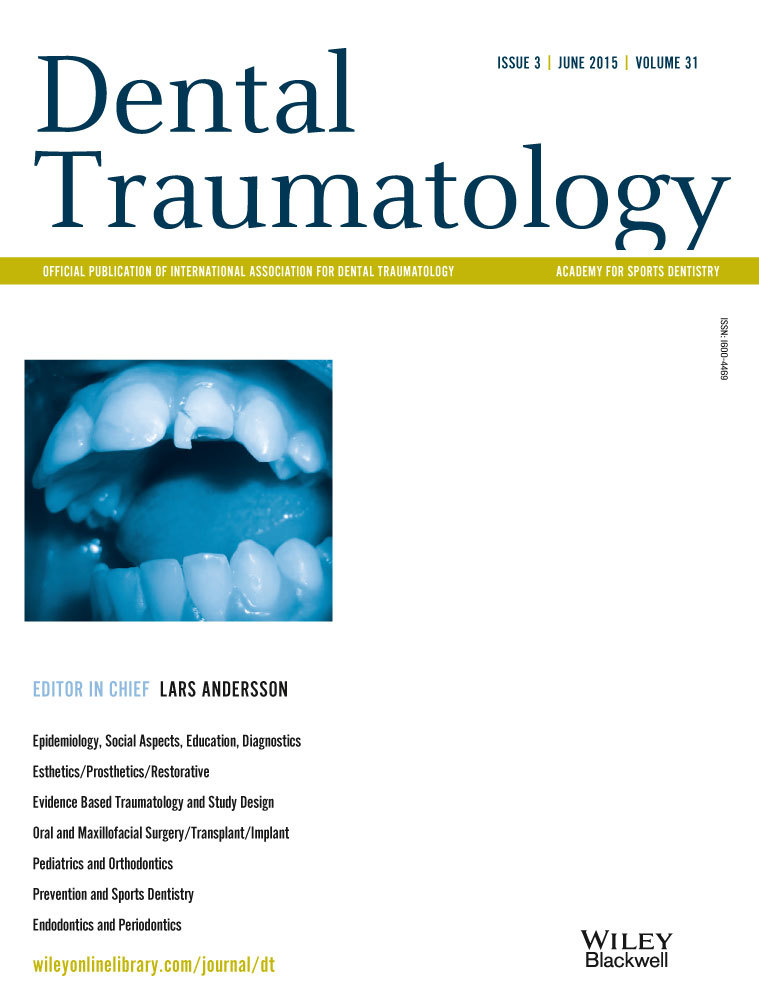Difference in vacuum-formed mouthguard thickness according to heating condition
Abstract
Aim
The purpose of this study was to examine the differences of the vacuum-formed mouthguard thickness by the heating condition within the proper heating temperature.
Materials and methods
The material used in this study was a mouthguard sheet of 3.8-mm ethylene vinyl acetate. The sheets were formed by vacuum forming using a vacuum-pressure former. Three heating conditions were prepared: The sheet was heated until the center was displaced by 10, 15, and 20 mm from baseline. We measured mouthguard thickness at the labial surface of the central incisor, buccal surface of the first molar, and occlusal surface of the first molar. Differences in thickness in different regions of mouthguards formed under different heating conditions were analyzed by two-way analysis of variance and Bonferroni method.
Results
We found that mouthguard thickness differed in different regions of the central incisors and the first molars (P < 0.01). The incisal (cusp) region was thinner than the cervical region. There was statistically significant difference among the heating conditions at the buccal surface of the first molar (P < 0.01), and the thickness became larger as the sheet was heated. Mouthguard thickness at the labial surface of the central incisor and occlusal surface of the first molar did not differ among the three heating conditions.
Conclusions
Our results suggest that the best heating condition within the proper temperature was the condition that the sheet was heated until its center displaced by 20 mm. This finding is necessary knowledge when forming a mouthguard sheet.




